
Transportation Infrastructure Geotechnology
Scope & Guideline
Exploring the Nexus of Geotechnology and Civil Engineering.
Introduction
Aims and Scopes
- Geotechnical Analysis and Modeling:
This area includes the use of various analytical and numerical modeling techniques to assess soil behavior, stability, and structural interactions under different loading conditions. - Ground Improvement Techniques:
Research in this scope focuses on methods and materials used to enhance the properties of soil, including the use of waste materials, binding agents, and innovative reinforcement methods. - Pavement Engineering and Material Behavior:
This includes studies on the design, performance, and durability of pavement materials, as well as the impact of environmental factors on their behavior. - Seismic and Dynamic Analysis:
The journal publishes research that addresses the response of geotechnical structures to seismic events and dynamic loading, emphasizing stability and safety. - Sustainable Practices in Geotechnical Engineering:
A growing focus on sustainability, including the use of recycled materials and environmentally friendly practices in geotechnical construction and infrastructure.
Trending and Emerging
- Machine Learning and Artificial Intelligence in Geotechnics:
Research utilizing machine learning and AI techniques for predictive modeling and analysis is on the rise, indicating a shift towards data-driven methodologies in geotechnical engineering. - Sustainability and Recycling in Material Use:
There is an increasing trend towards studying the use of recycled materials and sustainable practices, reflecting a broader commitment to environmental stewardship in engineering. - Advanced Numerical and Simulation Techniques:
The application of sophisticated numerical methods and simulations for analyzing complex geotechnical problems is gaining traction, showcasing the industry's move towards more accurate and comprehensive modeling. - Impact of Climate Change on Geotechnical Behavior:
Emerging studies are focusing on how climate variations affect soil behavior and infrastructure stability, highlighting the need for adaptive design practices.
Declining or Waning
- Traditional Soil Stabilization Methods:
There seems to be a decline in studies focused solely on conventional stabilization methods, such as lime and cement, as newer, more sustainable alternatives gain attention. - Static Analysis Techniques:
Research that relies heavily on static analysis methods appears to be decreasing, possibly due to the increasing recognition of the importance of dynamic and seismic considerations in geotechnical design. - Case Studies without Innovative Insights:
There is a noted reduction in the publication of case studies that do not integrate new technologies or methodologies, as the field shifts towards more innovative and data-driven approaches.
Similar Journals
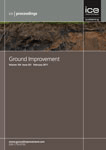
Proceedings of the Institution of Civil Engineers-Ground Improvement
Pioneering Solutions for Ground Improvement ChallengesProceedings of the Institution of Civil Engineers-Ground Improvement is a distinguished journal published by EMERALD GROUP PUBLISHING LTD, dedicated to advancing knowledge and research in the fields of Building and Construction, Geotechnical Engineering, Mechanics of Materials, and Soil Science. With an ISSN of 1755-0750 and an E-ISSN of 1755-0769, this journal has been a vital platform for disseminating innovative research since its inception in 2008. With an impact factor placing it in the Q3 category across multiple engineering disciplines, it ranks favorably in Scopus, ensuring visibility and recognition among scholars globally. The journal offers open access options, allowing for broader dissemination of research findings. Targeting researchers, professionals, and students alike, it aims to foster discussions on ground improvement technologies and methodologies that are essential for sustainable infrastructure development. As it continues to converge its focus until 2024, the Proceedings stands as an imperative resource for those seeking to elevate their understanding and contribute to the ever-evolving field of civil engineering.
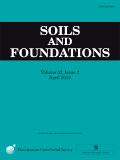
Soils and Foundations
Exploring the depths of geotechnical engineering excellence.Soils and Foundations, an esteemed journal published by the Japanese Geotechnical Society, has established itself as a pivotal platform for innovative research in Civil and Structural Engineering and Geotechnical Engineering. With an impressive impact factor reflected in its Q1 quartile ratings for both disciplines, the journal provides critical insights that foster advancements in the understanding of soil behavior and foundation design. Since its transition to Open Access in 2020, Soils and Foundations has broadened its reach, ensuring accessible dissemination of knowledge to researchers, students, and professionals globally. With a rich history dating back to its inception in 1960, the journal continues to uphold a high standard of scholarly excellence, ranking within the top percentile in Scopus across geotechnical engineering fields. This commitment to quality and accessibility makes it an essential resource for anyone engaged in the vital areas of soil mechanics and foundation engineering.
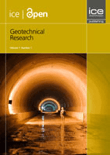
Geotechnical Research
Pioneering research in geotechnical engineering excellence.Geotechnical Research is an esteemed scholarly journal published by EMERALD GROUP PUBLISHING LTD, dedicated to advancing the field of geotechnical engineering and earth sciences. With an impact factor reflective of its robust contributions, this open access journal has been providing unrestricted access to high-quality research since 2014, making it indispensable for researchers, professionals, and students alike. The journal, indexed under the ISSN 2052-6156, features rigorous peer-reviewed articles that encompass a wide range of topics within geotechnical engineering and engineering geology, achieving a notable placement in the Q2 category in both Earth and Planetary Sciences and Geotechnical Engineering as of 2023. With its Scopus ranks further affirming its significance—ranked #44 out of 159 in Earth and Planetary Sciences and #78 out of 229 in Geotechnical Engineering—Geotechnical Research stands as a vital resource for innovative solutions and advancements in this critical field, ensuring researchers access to essential insights that drive the discipline forward.
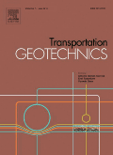
Transportation Geotechnics
Connecting Soil Science with Transportation Solutions.Transportation Geotechnics is a premier academic journal published by Elsevier, focusing on the intersection of geotechnical engineering and transportation systems. With an impressive impact factor and categorized in the Q1 quartile across multiple disciplines including Civil and Structural Engineering, Geotechnical Engineering, and Transportation, this journal stands as a vital resource for researchers and practitioners alike. It covers a broad spectrum of topics ranging from soil behavior in transport contexts to innovative materials and methods that enhance infrastructure stability and performance. As an essential platform fostering knowledge dissemination, Transportation Geotechnics enables contributors to share their groundbreaking findings while providing readers with access to cutting-edge research and reviews from 2014 to 2024. Its illustrious Scopus rankings place it prominently in the global research landscape, making it an indispensable tool for students, professionals, and academics dedicated to advancing the field.
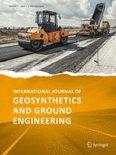
International Journal of Geosynthetics and Ground Engineering
Unlocking the potential of geosynthetics for a sustainable tomorrow.International Journal of Geosynthetics and Ground Engineering, published by SPRINGER INT PUBL AG, stands as a vital resource for the fields of civil engineering and materials science, particularly in the study and application of geosynthetics. With an ISSN of 2199-9260 and E-ISSN 2199-9279, this journal has established itself in the academic community, achieving a commendable position in Q2 category rankings for both Civil and Structural Engineering and Polymers and Plastics as of 2023. It ranks 134th in civil engineering and 77th in polymer science within Scopus, reflecting a respectable impact factor that emphasizes its influence in these disciplines. The journal covers a diverse range of topics, from innovative geosynthetic materials to groundbreaking engineering applications, and aims to foster an environment of collaboration and knowledge dissemination among researchers, professionals, and students. With its scope extending from 2015 to 2024, the International Journal of Geosynthetics and Ground Engineering is committed to pushing the boundaries of research and development in sustainable engineering practices, making it an essential publication for those interested in the future of geosynthetic technology.
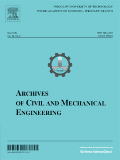
Archives of Civil and Mechanical Engineering
Advancing Engineering Excellence GloballyArchives of Civil and Mechanical Engineering is a distinguished peer-reviewed journal published by SpringerNature, focusing on advancing the fields of civil and mechanical engineering. With an impressive Q1 ranking in both categories in 2023, this journal caters to a global audience, addressing the evolving challenges and innovations within these vital engineering disciplines. The journal has been a pivotal platform since its inception in 2006, and it continues to be essential for researchers and practitioners seeking to publish and access high-quality research. The absence of an Open Access option ensures that published works maintain rigorous academic standards, thereby enhancing their value within institutional repositories. With a robust impact factor and high visibility on Scopus—ranking #122 out of 672 in Mechanical Engineering and #74 out of 379 in Civil and Structural Engineering—this journal is an ideal venue for professionals, researchers, and students dedicated to advancing their knowledge and contributing to cutting-edge engineering practices. Based in Germany and operating internationally, the Archives of Civil and Mechanical Engineering invites submissions that address critical issues and solutions in contemporary engineering.

GEOTECHNIQUE
Elevating Geotechnical Practices Through Groundbreaking ResearchGEOTECHNIQUE is a prestigious peer-reviewed journal published by Emerald Group Publishing Ltd, specializing in the fields of Geotechnical Engineering and Earth and Planetary Sciences. Established in 1948, this journal has consistently delivered groundbreaking research and advancements in the science of soil and rock mechanics, engineering geology, and environmental applications, aiming to foster innovation in geotechnical practices. With an impressive impact factor reflected in its Q1 ranking within both the Earth and Planetary Sciences and Geotechnical Engineering categories, GEOTECHNIQUE is recognized as a leading source of scholarly articles, positioning itself among the top 5% in the field. The journal is accessible via subscription, providing a repository of invaluable insights for researchers, professionals, and students striving to push the boundaries of knowledge and application in geotechnical topics. With a robust editorial board and a commitment to excellence, GEOTECHNIQUE continues to contribute significantly to the academic community and the practical engineering landscape.

CANADIAN JOURNAL OF CIVIL ENGINEERING
Connecting Researchers to the Heart of Civil EngineeringCanadian Journal of Civil Engineering, published by Canadian Science Publishing, serves as a premier platform for the dissemination of innovative research and development in the fields of civil and structural engineering, as well as environmental science. Established in 1971, this journal maintains a robust reputation, achieving a Q3 ranking in both civil engineering and general environmental science categories as of 2023. While it does not currently offer open access, the journal is accessible to a wide audience of researchers, professionals, and students who are keen to stay abreast of the latest advancements in civil engineering practices. With a significant number of yearly publications and a committed editorial board, the Canadian Journal of Civil Engineering contributes to the foundational knowledge and practical applications in the engineering community, thereby playing a critical role in addressing contemporary challenges in civil infrastructure and environmental sustainability.

International Journal of Engineering Research in Africa
Empowering Engineering Innovation Across AfricaThe International Journal of Engineering Research in Africa is a pivotal academic resource for researchers, professionals, and students interested in the multifaceted field of engineering within the African context. Published by TRANS TECH PUBLICATIONS LTD, this journal facilitates the dissemination of innovative research, covering a myriad of topics in engineering, from advanced materials to sustainable practices. With an ISSN of 1663-3571 and E-ISSN 1663-4144, this publication not only fosters scholarly communication but also contributes to the global engineering discourse, as evidenced by its current Q3 ranking in the Engineering (miscellaneous) category in 2023. Operating from its base in Switzerland, the journal has been actively publishing since 2010 and continues to play a vital role in the advancement of engineering knowledge, particularly in the African landscape. Although it does not offer an open access model, the journal's commitment to quality research ensures that it remains a valuable asset for those seeking to understand and innovate within the engineering sector. Its integration in Scopus with a rank of #175 out of 307 in General Engineering further underscores its relevance and impact in the engineering community.

JOURNAL OF COLD REGIONS ENGINEERING
Bridging Knowledge and Practice in Harsh EnvironmentsJOURNAL OF COLD REGIONS ENGINEERING, published by the ASCE-American Society of Civil Engineers, is a premier platform for disseminating innovative research in the field of cold regions engineering. Since its inception in 1987, the journal has been at the forefront of advancing the understanding of engineering challenges and solutions in cold climate contexts, which are critical for civil and environmental engineering practices. With its presence in both Geotechnical Engineering and Industrial and Manufacturing Engineering categories, the journal has achieved a commendable Q2 ranking in various Scopus classifications, signifying its robust contribution to academia and the industry. Researchers and professionals benefit from the journal's rigorously peer-reviewed articles that explore cutting-edge methodologies and technologies, making it an essential resource for anyone engaged in the dynamic intersections of engineering within cold environments. As an indispensable reference, JOURNAL OF COLD REGIONS ENGINEERING continues to foster knowledge exchange and innovation crucial for addressing contemporary engineering challenges.